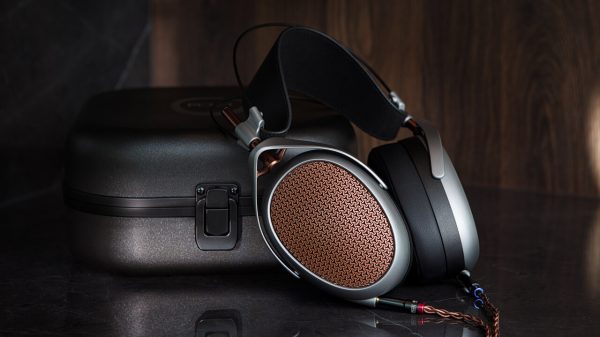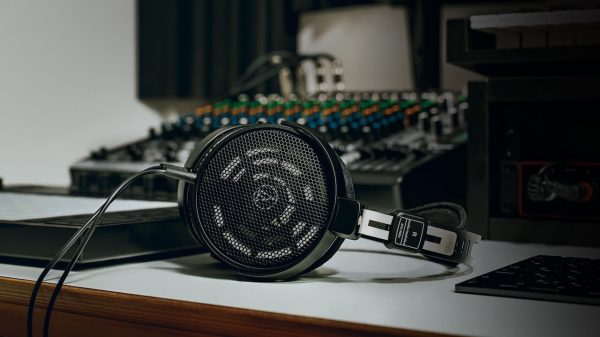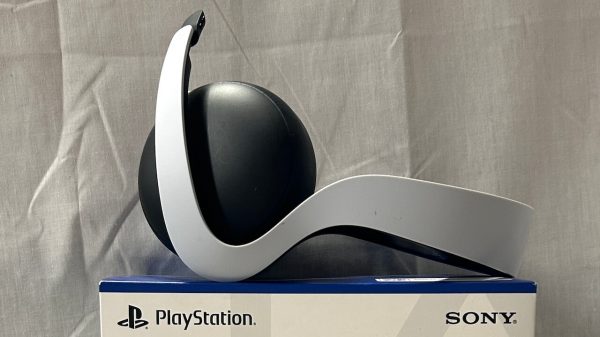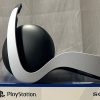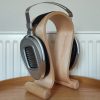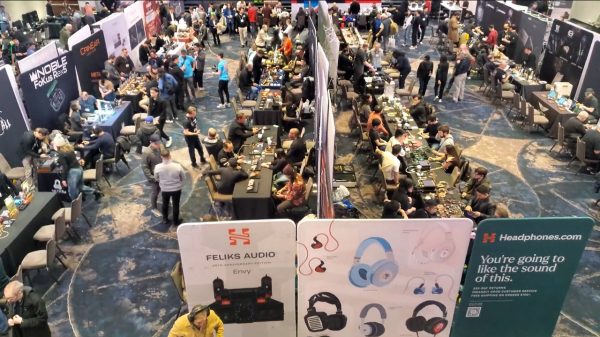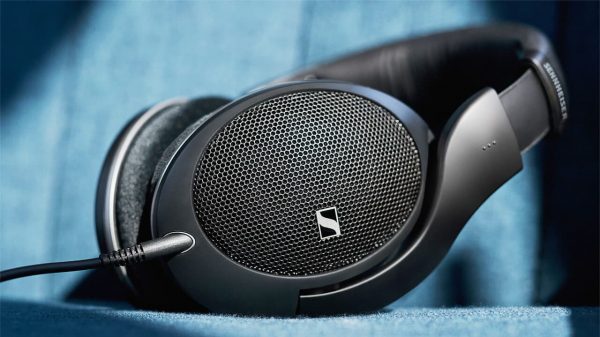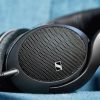Audeze has been at the tip of the spear of the audiophile headphone revolution producing some of the finest planar magnetic headphones in the world for over a decade. While their headphones tend to be on the receiving end of jokes due to their rather prodigious size and weight, nobody can deny they deliver one of finest listening experiences available. The LCDi3 only solidify their position within the high-end headphone category.
So, in 2017, when Audeze announced they were entering the in-ear monitor (IEM) market, they were met with some skepticism. Traditionally, IEMs must be small and light. (They are ‘in’ your ears after all.) To accomplish this, IEMs typically utilize tiny drivers housed in closed-back, ergonomic shells that fit snugly inside your ears.
But that’s not what Audeze is good at.
The Audeze iSINE 10 and 20 launched with 30mm open-backed planar magnetic drivers. To answer the inevitable question of ‘how do you fit a 3cm wide driver in your ear’, the only reasonable answer is ‘you don’t’. Audeze didn’t even try.
Remember that full-sized dynamic driver headphones typically range between 30-50mm in size, and IEM drivers generally are in the range of 8-10mm, so a 30mm IEM driver is enormous!

The iSINE release created a brand-new category of headphones; neither full-sized nor (really) an IEM. Let’s call them ‘portable ear monitors.’ The drivers are suspended via ear clips outside of the ear with a tapered nozzle and ear tip that enters the ear canal.
With the iSINE experience under their belt, Audeze shrank some of their best technology into the flagship LCD-i4, another ‘portable ear monitor’ style headphone. And that finally lead to the most recent (2019) release of this design, the LCDi3. The i3 share much in common with their top-of-the-line older brother and the LCDi3 represent a sweet convergence of quality, technology, and price within the Audeze portable lineup.
Note that lower case “i” in the name? Now, where have we seen that before? It turns out the good folks at Audeze have thumbed their noses at Android and have gone all-in with Apple device support. The i3 comes with the Audeze CIPHER cable, a dedicated DAC/Amp featuring a Lightning cable plug for iDevices. It supports a unique Apple app (Audeze HQ), which enables special digital signal processing (DSP) for the i3 and i4.
As if there wasn’t enough friction already between Apple and Android users.
As a dedicated Apple ecosystem guy and a massive fan of the (now classic) LCD-2, I was excited to give the LCDi3 a try and compare the results between my typical portable source (a Hidizs AP80 Pro DAP mated to a Chord Mojo) and straight out of my phone. Is there something special here that the Android guys and dedicated DAP users are going to miss out on hearing?

Company Overview
Established in 2009, Audeze LLC is a high-end audio headphone manufacturer based in Santa Ana, California. They quickly grew from a garage-based startup to one of the most respected headphone companies, now with almost 50 employees. Audeze started out under the name Audez’e, which explains the pronunciation (“odyssey”).
Audeze states that their goal is to deliver “the most accurate sound reproduction available today. Audeze products are engineered with the latest innovations in materials science and technology matched with precision craftsmanship to produce an astonishingly dynamic and immersive sound. Audeze’s commitment to research and development is reflected in every facet of our products.”
The success of their LCD series of planar magnetic headphones cemented Audeze as a significant player in the personal audio audiophile scene. More recently, they ventured into the gaming and pro audio markets and have already achieved a significant level of success.
Technical Specifications
- Price: USD $899
- Form: Portable ear monitor, In-Ear, Semi-Open
- Drivers: 30mm planar magnetic driver, Neodymium N50 Fluxor magnet array
- Impedance (Ohm): 20 Ohms
- Sensitivity (dB): 110 dB/1mW (At Drum Reference Point)
- Maximum Power Handling: 500mW RMS
- Minimum Power Requirement: >50mW
- Maximum SPL: >130dB
- THD: <0.1% @ 100dB
- Frequency Response (Hz): 10Hz – 50kHz
- Removable Cable: Y
- Source Jack: 3.5mm
- Cup/Shell Jack: Custom 2-pin
CIPHER Bluetooth Cable
- Bluetooth Audio Codec: AAC/SBC/APTX and APTX-HD; A2DP, AVRCP, HFP, HSP
- Bluetooth Version: 5.0
- Battery Life (hrs): <8 hours
- Mic: Y
- IPX: N
- Weight (g): 17g
- DSP: Audeze CIPHER DSP

Packaging
Befitting headphones of this tier, the Audeze packaging impresses. The austere outer white box contains a clear plastic box with a black fabric fold-over cover. The LCDi3 are displayed above their large black ballistic nylon case. It’s all very classy and imposing.
So What’s Inside the Box?

- Standard 3.5mm TRS, 0.75mm 2-pin cable (150cm)
- CIPHER Bluetooth module (150cm)
- CIPHER Lightning cable (61cm)
- Nylon travel case with foam insert
- 4 pairs of ear hooks (2 small, 2 large)
- 1 pair of ear fins
- 3 pairs of ribbed silicone ear tips (small, medium, large)
- 3 pairs of smooth silicone ear tips (small, medium, large)
- Cleaning tool
- Cable shirt clip
- Micro-USB charging cable
- User guide
- Warranty card
- Certificate of authenticity
This is a situation where the accessories match the quality of the headphones. To be honest, I found the entire unboxing experience a bit intimidating. I’m a guy who opens up an extraordinary number of headphones and IEMs regularly. So, it is pretty unusual when I’m genuinely surprised by the variety, type, and quantity of accessories.

The LCDi3 are not a typical set of headphones, and their accessories reflect this.
Ear hooks? Ear fins? Ribbed silicone ear tips? These aren’t the usual accessories I’ve come to expect. The ear hooks are fairly straight forward. After all, you need to wear these things somehow. Once you identify the left and right sides, they click onto the LCDi3, so all that’s left is for you to figure out what size ear tips fit you the best.
The ear fins are rubber (fin-shaped) bits that slide onto the nozzles before the ear tips go on. Some folks might find they provide a better fit. For me, the fins push the LCDi3 too far out from my ears, and I find the LCDi3 fit my particular ears better without them.

The ribbed ear tips are unusual, and I’m not sure if they do anything more than provide a bit more grip. Either way, I found the best fit with the medium-sized ones.
The nylon fabric case is larger than the normal for IEMs but is just large enough to contain a couple of cables and the LCDi3. The interior is nicely lined with soft fabric and includes a small pocket. The feel of the case is representative of the overall impression of the LCDi3 and accessories. It’s all sober and understated excellence; not glitzy or gilded, just a no-nonsense and high-quality build.
Three types of included cables? Including a Bluetooth adapter in the box is unusual enough, but including a Lightning cable for Apple devices is truly unique! It’s a logical fit, though, as the iPhone is relatively ubiquitous. Although the choice does divide the potential user base, there are still many folks who have iPhones in their pockets. Apple devices also tend to be a bit upscale, and are a perfect match for Audeze. And, of course, the standard 3.5mm and Bluetooth cables will work with all devices.
The only thing missing for me here is a balanced cable. I would prefer a 2.5mm balanced cable with a 3.5mm adapter. I’m sure Android users (and future iPhone users) would appreciate a USB-C CIPHER cable.
Cables
All three cables are black and rubber-coated but differ in size and shape. All sport gold 2-pin connectors which are clearly labeled L and R. The standard 3.5mm cable is flat and fairly thin and the TRS plug is surprisingly svelte. The Lightning cable has a four-button in-line remote and is labeled for use with the i3 or i4. The CIPHER Bluetooth cable has a three-button in-line remote and a second cylinder on the wire containing the battery.
While all three cables feature similar color and materials, all are uniquely different in thickness, connector design, button shape, y-splitter, etc.

The two CIPHER cables are more than just a connection (Bluetooth and Lightning). Audeze says that they have their “proprietary DSP preloaded on all CIPHER products for optimized, audiophile-quality sound. All CIPHER devices come preloaded with our proprietary DSP to provide an optimized audiophile listening experience with both wired and wireless connections.”

When using the Lightning cable, Apple users can install the free Audeze HQ application from the App Store. The app unlocks a 10-band graphic equalizer to tailor the sound to your preferences. Unfortunately, upon opening the app, it starts with a somewhat cryptic process that tells you to submit a picture of your ear (which is way more challenging than it sounds – you try taking a perfectly centered picture of your own ear!). All the app explains is that it’s for the “Audeze HQ’s Aural Map crafted by EMBODY.”

The instructions tell you to “place your face to fill the screen” before pressing the capture photo button. If you do so, your handsome mug is compared to a side shot of someone’s left ear with the caption “does your photo match the example?” Of course, it doesn’t, because you told me to fill the screen with my face! This is a bizarre oversight for such a premier company.
Once you capture that elusive ear pic, the app then asks you for your email. Once submitted, it says, “please make sure you are using the same email address as the one used to register Audeze Reveal Plugin purchase.” Ugh. Wouldn’t it make sense to tell us that in the beginning, especially before I spend 10 minutes trying to take a clear shot of my ear? Yeesh.
No, you don’t get the Aural Map without paying for it. And you don’t need to do the above process to use the EQ features of the Audeze HQ app.
By default, the Roon software contains the Audeze REVEAL plugin.
The REVEAL plugin costs $199. There is a 14-day free trial, or the legacy version is also available for free, but neither allow you to register to use the Aural Map. For someone new to this whole aspect of Audeze, it all seems pointlessly confusing. To use the graphic equalizer (as I imagine is the desire for most app users), none of this is necessary. Why doesn’t the app just open to the EQ screen?
The final app option checks for and installs cable firmware updates.

I’ll speak to sound differences between cables in the Sound section below.
Design
For lack of a better descriptive term, the LCDi3 look badass. While the previous iSINE designs resemble (a bit too much) miniature tie-fighters jammed in your ears, the silver mesh under black horizontal grill lines on the LCDi3 is almost military in appearance. These are the weapons of the IEM world. Purposeful design in a realm that tends towards bling and jewelry. They are a pair of black and chrome Hummer H1s in a parking lot full of cute, shiny, and colorful little Fiats.
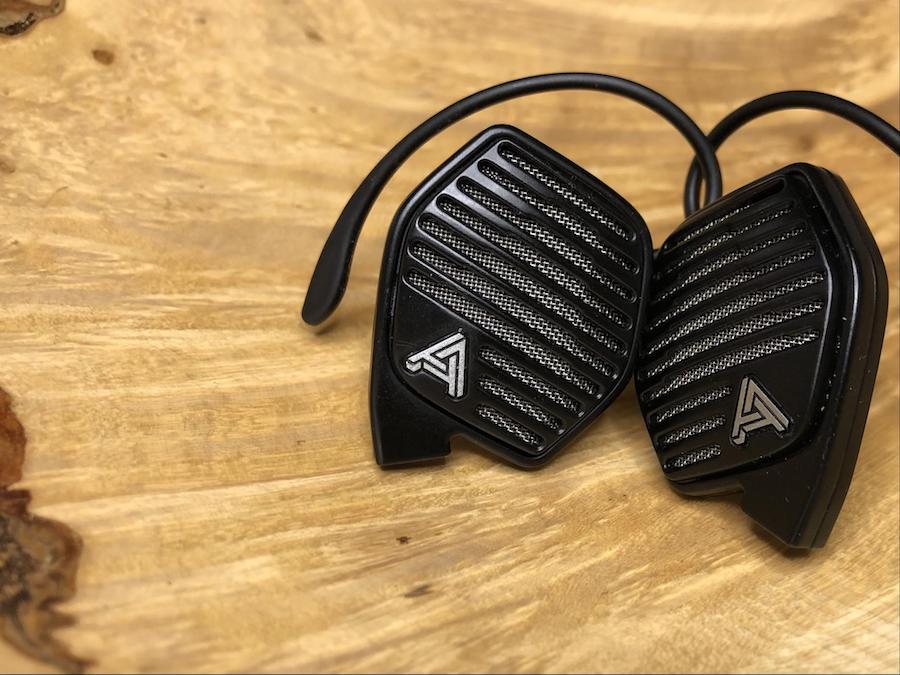
There is a subtle capital ‘A’ shape in the grill formed by a slight thinning of the horizontal lines. Very, very classy.
The hexagon-shaped body is formed from magnesium alloy, while the nozzles are black plastic to save weight. The inside surface is sealed and sports a ring around the nozzle that serves as the ear clip’s attachment surface. The nozzles have to be reasonably long to reach the ear canal but do not insert too deeply.
Audeze describes the outer surface as being “semi-open,” and in fact, isolation is more on par with open headphones than with closed-back IEMs.
Comfort
I was skeptical about how the LCDi3 would feel to wear. The plastic ear clips and considerable size do not seem to indicate the pinnacle of comfort. Much to my surprise, I did not feel the ear clips very much at all, and (for better or worse) they felt like standard IEMs with a shallow insertion depth. It took some acclimatizing before my ears got used to them for longer (multi-hour) listening sessions, as eventually, the ear clips made themselves known.

“Our brand new Ear Fins are ergonomically designed to provide a comfortable and secure fit within the concha bowl of the ear. For those that prefer the traditional iSINE fit, our redesigned Ear Hooks now curve inward along the back of the ear to ensure superior fit for ears of all shapes and sizes.”Audeze
Although Audeze claims that their ear fins should work with any ear, I just couldn’t get them to work for mine.
The other thing that surprises me is how discreet (and not insane) the LCDi3 look to wear in public. Based on the Audeze full-sized headphones’ visual impact, I expected these to protrude like the Frankenstein monster’s neck bolts, with a certain Borg-like aesthetic. Remarkably, they are surprisingly subtle and classy looking when worn.
My only gripe is that the downward-exiting cables are quite microphonic, and unwanted noise can be heard when the cable inevitably rubs on a shirt collar.

Internals
The LCDi3 is the evolution of the iSINE series. They share the same magnesium housing and grill design of the TOTL LCD-i4, designed to reduce unwanted resonance.
“Borrowing from the award-winning LCDi4 design, the LCDi3 features a cast magnesium housing with an open back design for greater transparency and deep, clean bass extension. The low impedance driver leverages our patented Uniforce™ voice coil and Fluxor™ magnet technologies to achieve the highest dynamic range of any in-ear…”Audeze
Uniforce is what Audeze calls their voice coil design. It is intended to create a uniform magnetic force (or flux) across the diaphragm surface. (Uniform magnetic force = Uniforce.) The conductor’s width varies in the Uniforce coil so it’s wider where the magnetic field is stronger and thinner where the magnetic field is weaker. In theory, this ensures “that all parts of the diaphragm experience the same force, resulting in true pistonic motion.” It’s all in the name of reducing distortion.

Fluxor is Audeze verbiage for increasing the magnetic strength (flux) within the driver’s magnet array. This “means a higher Sound Pressure Level (SPL) or higher efficiency (measured in dB/mW).” By exerting higher force on the diaphragm, this allows for better control of its motion. A stronger magnetic field also enables thinner conductors, leading to a longer voice coil length, which improves diaphragm speed.
“The LCDi3 introduces superior resolution and refined acoustical tuning to the award-winning iSINE design. Featuring the design of the LCDi4 together with the low impedance of the iSINE series, the LCDi3 can push up to 130dB with zero audible distortion for a true audiophile in-ear experience.”
Audeze
The semi-open back design is a trade-off to address issues typically found with closed-back planar drivers. It reduces their tendency towards unnatural sounding peaks in the 2.5-5kHz range. Open-backed means that outside noise can impact and disrupt listening with the LDC-i3. However, the open design’s overall sound benefits by being airier and more spacious than a traditional IEM.
Noise leakage from the LCDi3 is relatively minimal at reasonable listening levels.
Bluetooth
The CIPHER cable uses Bluetooth 5.0 and supports a maximum (quality) codec of apt-X HD, and if you haven’t tried these new higher-quality Bluetooth connections, I urge you to do so. You may be very pleasantly surprised, especially if an SBC connection was your last experience. For non (extremely) critical listening, or while out-and-about, the level of fidelity possible with these new codecs is quite impressive.
Connection stability is excellent, and as long as the LCDi3 remain within the same room as the source, you should experience no drop-outs or interruptions. Connecting is the same simple process as pairing to any Bluetooth audio device.

The CIPHER Bluetooth cable also contains Audeze’s proprietary DSP, so Android folks can receive some of the benefits that Apple users get using the CIPHER Lightning cable. Audeze claims it “delivers low latency 24-bit wireless audio that has been optimized for even the most discerning ear.”
The Audeze HQ app EQ does not appear to work with the Bluetooth cable.
Regardless of any marketing claims, the Bluetooth connection does sound good, although somewhat less dynamic in direct comparison to the Lightning CIPHER cable.
CIPHER DSP Sound
Both the Lightning and Bluetooth cables contain the Audeze DSP magic, while the 3.5mm cable does not. I was curious about the sound differences between these cables. Does it really make any difference? Well, it turns out that the Audeze DSP tuning is quite significant.
Compared to the 3.5mm cable (using the CIPHER cables) the bass is more pronounced, with a more significant punch and weight. This adds fullness to vocals and instruments. Treble is also more forward, with increased airiness and brilliance. The treble response helps to balance the bigger low-end and creates a somewhat more v-shaped sound. The 3.5mm sound signature is brighter overall, with a leaner foundation.

The measurements essentially correspond to what I hear. If anything, the Lightning cable has an even stronger bass response than the Bluetooth cable.
I prefer the sound with all that CIPHER DSP going on. The 3.5mm cable sound is less engaging, and more flat sounding. While it may appeal to those who prefer a ‘neutral’ sound, the DSP tuning brings more excitement and energy to the music.

Of course, you can use third-party EQ settings to approximate the CIPHER sound signature with the 3.5mm cable, but you have to play around to find what works the best, rather than having the Audeze intended sound right out of the box.
Sound
The LCDi3 have a rated impedance of 20 ohms and a sensitivity of 110dB/1mW, making them fairly easy to drive for most portable devices. That being said, they do seem to benefit from receiving more than the bare minimum of amplification, with a notable improvement in dynamics. This, of course, is only an issue if not using the CIPHER cables, which provide their own amplification.
Most of my listening was done from my iPhone using either the Lightning cable or the Bluetooth cable. File format and music style varied, but I did most of my listening in the relatively quiet confines of my home, with the occasional neighborhood walk.
Note that Apple devices do not support aptX Bluetooth connections, so I tested that connection using the Hidizs AP80 Pro.
It’s tough to directly compare the LCDi3 to other traditional IEM designs, as dynamic or BA drivers are very different sounding than planar magnetic. However, once my ears and brain made the transition, I was pleased to find that the LCDi3 detail and dynamics are quite impressive. The larger drivers might make you think they will sound slow or muddy, but they are the opposite of sluggish. If you are a fan of planar magnetic bass response, you will find a lot to like here in this smaller format. The fundamentals remain very solid and articulate.

The size of the soundstage is a big departure from traditional IEM sound. The LCDi3 sound remarkably open (as in truth they are) and this translates to a spacious feeling, which is seldom found in IEMs. Gone is that center-of-the-head listening experience. This does make imaging seem to have a bit less than pinpoint accuracy, but it’s a trade-off that many will prefer. The experience is far more like full-sized headphone listening.
I feel somewhat set back from the music when listening to the LCDi3. They do not have a ‘right-on-the-stage’ presence. Instead they make you feel you are sitting mid-auditorium, with the music immersive and filling the space around you.
With the 3.5mm cable, there is a peak between 800 Hz to around 1.5 kHz, followed by a fairly significant trough into the treble regions. This creates a unique tonality that may or may not appeal to your particular ears. Again, using the CIPHER DSP significantly changes the LCDi3 sound. Overall, they are on the warmer side of neutral with remarkable space and air.
Bass
I’m no bass-head, but I do gravitate towards fuller and warmer sounding headphones. The LCDi3 3.5mm cable listening experience is a bit bass-shy and flat for my taste. The CIPHER cables help fill things in. Although, even with the Audeze DSP, the low-end remains somewhat subdued without applying further equalization.
Controlled and fast planar bass is the name of the game. If you are a bass-boost kind of person (no judgment here), the LCDi3 drivers are more than up to the task. The bass response stays clean and imparts great physicality and depth.
I expect great things from Audeze bass, and I am not disappointed. With the LCDi3, fidelity wins out over quantity, although the sub-bass extension is rather good. The bass is textured, without single note boominess, and the impressive resolution easily offsets the weight.

Midrange
The presence of the bottom end extends into the midrange, delivering all of the necessary resolution and tone with vocals and instruments. I love the warmth that my 10-year-old LCD-2 headphones portray, so I’m an easy target for the Audeze blend of smooth and organic mids. The LCDi3 follow this trend with great body and a realistic portrayal of sounds within this frequency range.
I hesitate to call the midrange neutral, although it is clean and natural. There is more weight and richness to the sound than what I can consider as truly neutral. The LCDi3 are not flat measuring IEMs, and they reflect the Audeze ‘house sound’, which certainly has its fans and detractors.
The sound is expansive but not forward. Immersive rather than intrusive. Deep rather than flat. If you listen carefully, there is good detail to be found here, but it doesn’t force itself into your head.
Treble
Treble response is smooth and polite. The sound is open and spacious, and the LCDi3 are far from aggressive or edgy. The topmost frequencies are a touch rolled-off; which help in reducing listener fatigue.
The high-end is soft and sweet sounding. Those preferring maximum spark and sizzle in their music may be disappointed, but I much prefer a more relaxed signature that I can groove along to for hours. The LCDi3 deliver in spades, giving a full, immersive and comfortable listening experience.
The LCDi3 are somewhat restrained but they embody controlled power and physicality.
Where to Buy
Conclusion
Audeze made some bold decisions when designing their line of IEMs. First, the form factor had to be entirely new to contain their large 30mm drivers. This led to creating an innovative shape, new ways to wear them, and figuring out how to connect to the ear canals.
Next up, Audeze decided to base the sonic signature around their own proprietary digital signal processing technology. This meant including several connection options in the box, with significant sound differences between them.
Finally, they joined team Apple with a proprietary Lightning cable (the best sounding option of the bunch) and an associated app. DAP and Android users are simply out of luck unless they are willing to compromise with a Bluetooth connection, and they still don’t get to use the Audeze EQ.
These were all bold choices. The question is, did the risks pay off? Are the results as revolutionary as the steps taken to create the LCDi3?

The LCDi3 are the middle-of-the-line (albeit still expensive) option. Although on paper, they seem so extraordinary, the outward impression that the LCDi3 present is remarkably subdued. They are a luxury sports sedan, painted flat black. The sedan may cost the same, and contain much of the technology, power, and innovation of a screaming yellow supercar, but it does so with restraint and subtlety.
In truth, the LCDi3 are not IEMs. It is much more accurate to call them portable ear monitors; they are as close as you will find to the full-sized headphone experience in a truly portable package. The sound is expansive and immersive and does not seem to emanate from the center of your cranium (as is the case with many IEMs). Yet, there’s no need to bring an additional amp or DAP along with you — they sound their best just mated to your iPhone with the Lightning cable.
Let’s face it; you aren’t likely going to go for a walk with a headphone from the full-sized Audeze LCD lineup on your noggin. But now you can have that same sort of listening experience, without the weight, bulk, or curious stares. And the fact that the LCDi3 allow outside sound to intrude means you are less likely to be run over. A huge benefit to be sure.
Rating: 4.5 out of 5
Pros
- Luxurious build quality
- If they were cars, they could have featured in the classic car-chase movie Ronin
- Subtle appearance
- Surprisingly comfortable
- Three different connection cables in the box
- Spacious sound is more like full-sized headphones than IEMs
Cons
- Non-DSP fans or EQ deniers should look elsewhere
- The best sounding connection requires an iPhone with a Lightning jack
- Open back design allows in outside noise (may be a pro for walks)
- Audeze HQ app a bit baffling
- Tip rolling a challenge due to large nozzle diameter
- Not inexpensive
Thank you to Ari Morguelan and Audeze for providing the LCDi3 for review purposes. If you’d like to purchase the LCDi3, they are available directly from Audeze for USD $899.
















